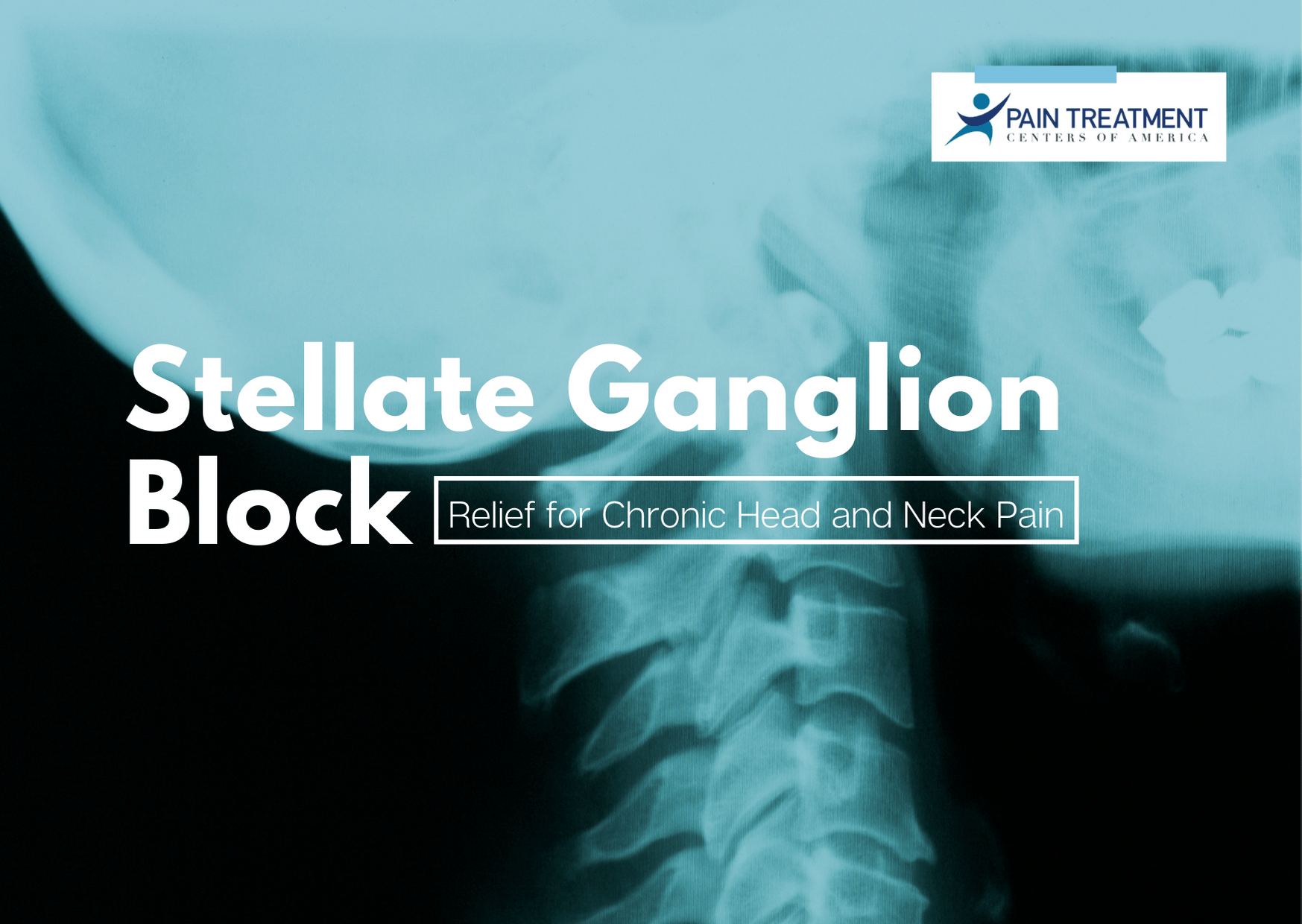Call for more information: (844) 215-0731
New Patient Department:
(501) 254-0967
Referrals (Fax): (888) 630-8885
Medical Records (Fax): (501) 476-5707
Stellate Ganglion Block for Pain Relief
Living with a chronic pain condition can life challenging. In many cases, pain can be debilitating. Perhaps your life has been disrupted and impaired by head or neck pain that keeps you from being able to do the things you want or need to do. Learning more about the Stellate Ganglion, a specific part of human anatomy, may be the first step toward alleviating your pain.
It's important to discuss your particular case with someone well-versed in chronic pain relief issues. In many cases, people who have tried multiple treatment plans without success have obtained relief by undergoing local anesthetic injections inserted into their stellate ganglion.
When you're unable to carry out the normal tasks of your everyday life because of a health condition that is impeding your mobility, it's helpful to reach out for additional support to explore options that might be available to you.
What Is the Stellate Ganglion?
To understand certain pain relief options that may be available to help relieve chronic head and neck pain or pain that radiates through the upper-back or arms, you'll want to first learn more about the Stellate Ganglion. This scientific term refers to a bundle of nerves that lies inside your neck.
Managing Chronic Pain Issues
You, no doubt, have good days and bad days when it comes to managing your pain. If you've been living with a chronic pain condition for some time now, you've probably learned numerous ways to obtain relief so that you can function on a daily basis. Perhaps you've been taking prescription medication but would like to explore other options.
When you're experiencing discomfort, you may have even tried massage or upper-body stretching and exercise to try to obtain relief. Many people who have suffered similar chronic pain conditions have been able to alleviate their pain by undergoing a medical procedure called a “Stellate Ganglion block”, which involves injecting a local anesthetic into or near the stellate ganglion nerves.
How It Works
A Stellate Ganglion block is a promising surgical procedure that may help mitigate chronic pain symptoms in the head, neck, upper back, or arm regions of the body. If you were to undergo this procedure, the surgeon would inject anesthetic medication into your stellate ganglion to ease or fully eliminate pain in this region.
Several typical side effects may occur after you have this procedure. Such effects include a hoarse-sounding voice, tingling or warmth in your hand or arm, difficulty swallowing, and nasal stuffiness.
Who Is a Good Candidate for Stellate Ganglion Block?
There are a variety of conditions that would qualify you as a candidate for a nerve block procedure. If you are a post-operative patient who is experiencing severe pain, such as following a knee surgery or ligament reconstruction, your medical team might recommend a stellate ganglion block to help mitigate your symptoms. Women who have had a hysterectomy or are experiencing severe episodes of profuse sweating and hot flashes due to menopause may also be candidates for this type of non-surgery treatment.
If your chronic pain condition involves migraine headaches, you're part of a group of patients that most often undergoes a stellate ganglion block for pain management, especially when other more typical forms of treatment and remedies have already been tried but proved unsuccessful.
Post-Traumatic Stress and Nerve Block Surgery
Your pain might be associated with Post Traumatic Stress Disorder (PTSD). In addition to physical pain, PTSD often includes symptoms of severe emotional trauma and can be debilitating. Many surgeons and PTSD specialists say that stellate ganglion block treatments have shown promising results in helping PTSD patients alleviate pain and reduce severe and chronic anxiety.
PTSD is a condition that typically develops following exposure to extreme stress, sudden trauma, or serious injury. Stellate ganglion block does not cure PTSD. Studies show, however, that it is has been highly effective in providing immediate and prolonged relief for physical pain and other symptoms of PTSD.
Stellate Ganglion Block Is a Swift Procedure
This nerve block procedure takes approximately 15 minutes or so to complete, providing there are no complications. Depending on your specific reason for having the procedure, you may be able to have it done on an outpatient basis. There is no way to predict with 100% accuracy what the results of your procedure will be. Many people obtain pain relief for days while others say their symptoms subsided for months.
The good news is that a Stellate Ganglion block may be repeated as often as necessary. During recovery, it is common for patients to receive physical therapy to help restore the motion and function of the affected side where the injection was administered. As with all medical procedures, there are inherent risks involved when a needle is being inserted into your body to inject a local anesthetic. When considering whether a Stellate Ganglion block is a viable option to help you relieve chronic pain or manage symptoms of PTSD, it is always best to discuss possible risks with your pain management team ahead of time. Current data shows that this procedure is considered low risk and highly effective to alleviate pain and providing relief of symptoms associated with other chronic health conditions.
PTCOA is Arkansas’s largest fully comprehensive pain management practice with multiple locations to best serve our patients. We have dedicated physicians, state-of-the-art surgery centers, medication monitoring, CLIA certified labs, and the most combined pain management experience of any practice in the region. If you are experiencing pain and have questions about our services, please call us at (844) 215-0731 for further information.




Call usReferrals (Fax)(888) 630-8885
Patient Support Hours
Monday - Thursday 8:00 - 5:00

All Rights Reserved | Pain Treatment Centers of America | Arkansas | Mississippi | Texas




